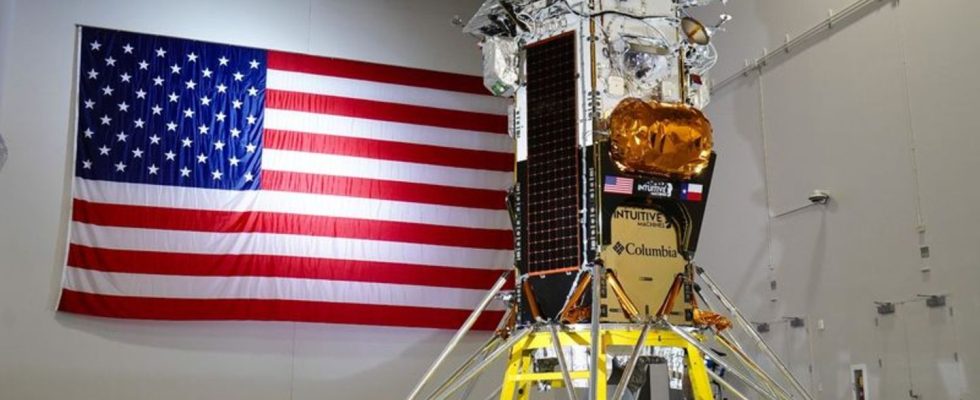Space travel
First private moon landing: “Nova-C” apparently tipped over
The lander Nova-C from Intuitive Machines. photo
© Nick Rios/Intuitive Machines/dpa
It is the first private moon landing ever: “Nova-C” has touched down on Earth’s satellite and is active. But the device doesn’t seem to stand perfectly on the surface.
He was nevertheless optimistic: The batteries would be charged via solar panels, and most of the devices would be on the side of the lander facing away from the ground. “We’re collecting data,” Altemus said. The vehicle landed near the planned landing site and was stable.
Only a payload with an art object was attached to the side facing the ground, said Altemus. The US artist Jeff Koons sent 125 miniature stainless steel sculptures – called “Moon Phases” – to the moon.
Image of the lander expected this weekend
“Nova-C”, also called “Odysseus” or “Ody”, reached its destination in the southern region of the Earth’s satellite on Friday night. Initially it was said that the lander landed upright on the lunar surface. This presumably incorrect assumption comes from sensors in the fuel tanks, Altemus now said.
It is hoped that NASA’s Lunar Reconnaissance Orbiter probe will take a picture of the lander this weekend, said Altemus. You can then determine the exact position and orientation of the device.
It is the first time in half a century that a US device has landed on the moon. The “Nova-C” lander is about the size of an old-fashioned British telephone booth, has aluminum legs, weighs around 700 kilograms and can carry around 130 kilograms of cargo. NASA has used a large part of it with research equipment and other material, while commercial companies have secured the rest for their projects.
“Nova-C” had launched around a week earlier from the Cape Canaveral spaceport in the US state of Florida. The means of transport was a “Falcon 9” rocket from technology billionaire Elon Musk’s space company SpaceX. The mission is part of NASA’s “CLPS” (Commercial Lunar Payload Services) program. With this program, the US space agency wants to collect as much knowledge as possible on its own way back to the moon comparatively cheaply and efficiently by awarding contracts for lunar landings to private companies and working with them.
Moon landings are considered to be technically extremely demanding and often go wrong. This year alone, two planned landings have turned out differently than hoped.

